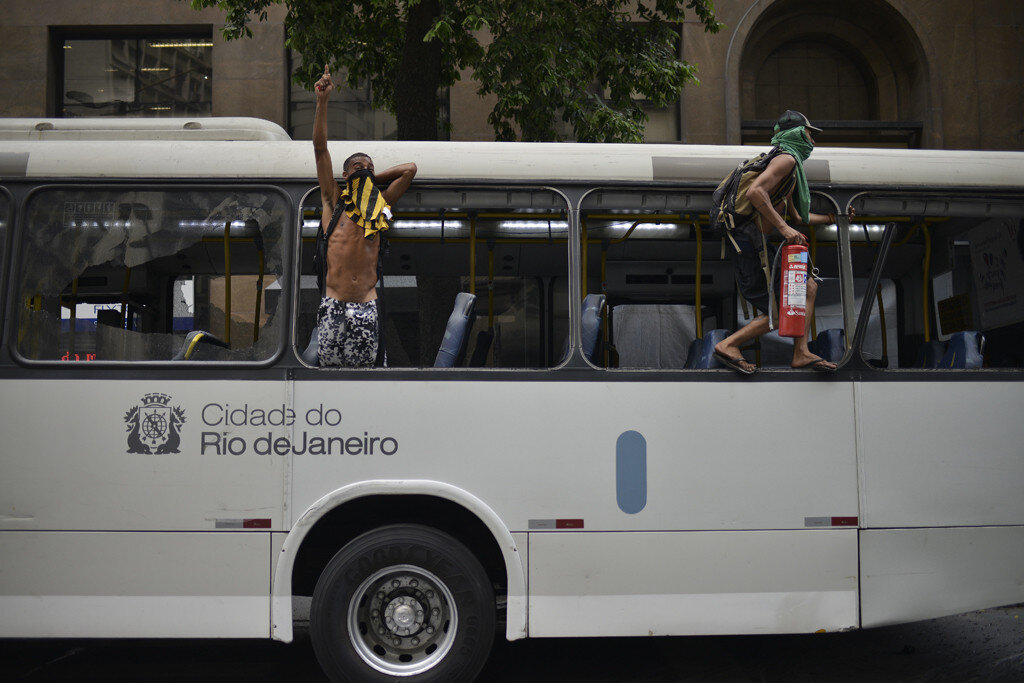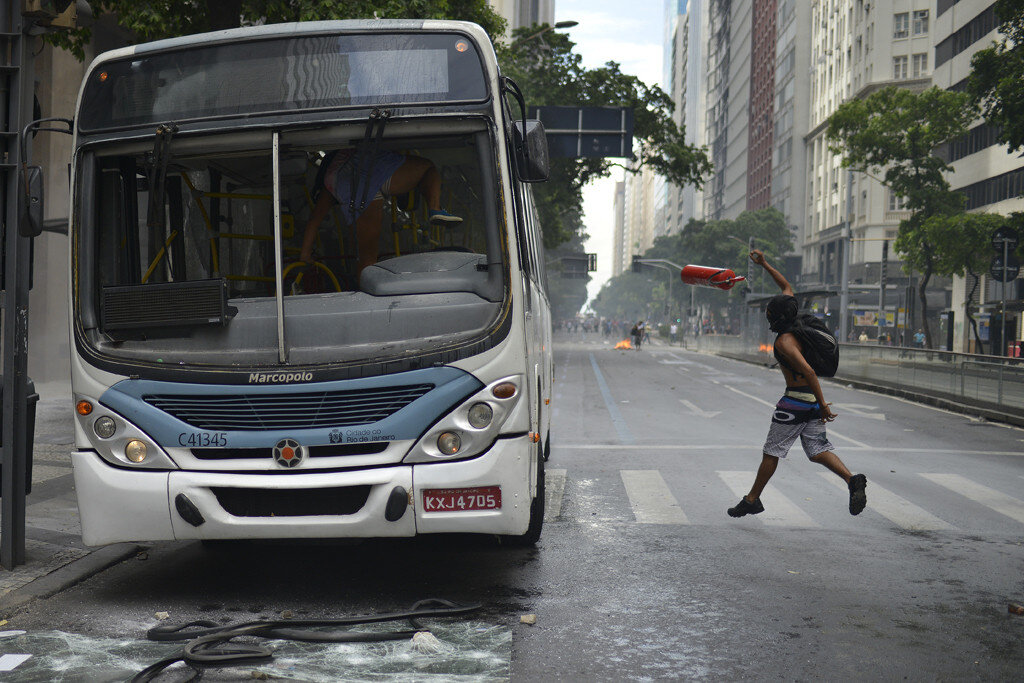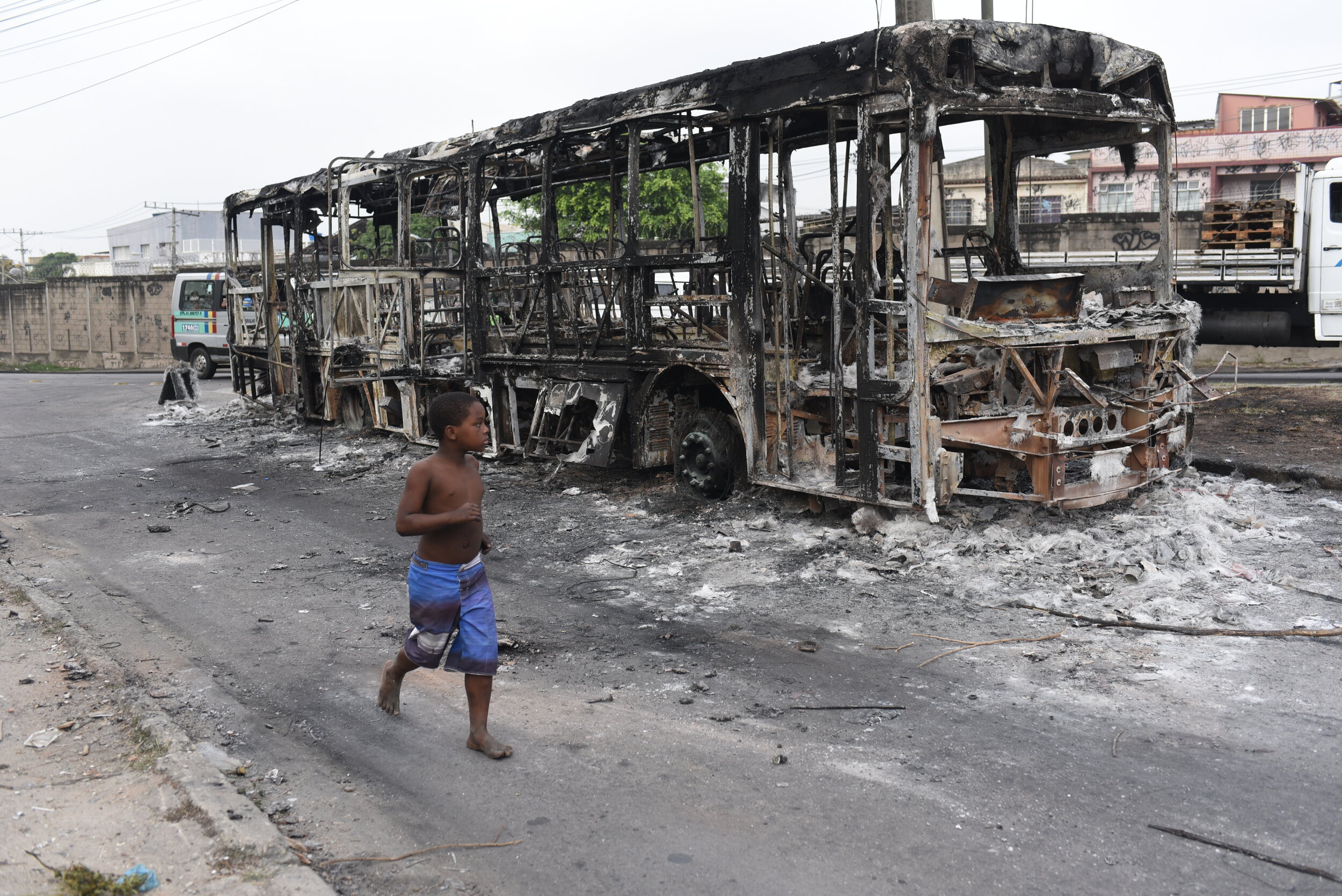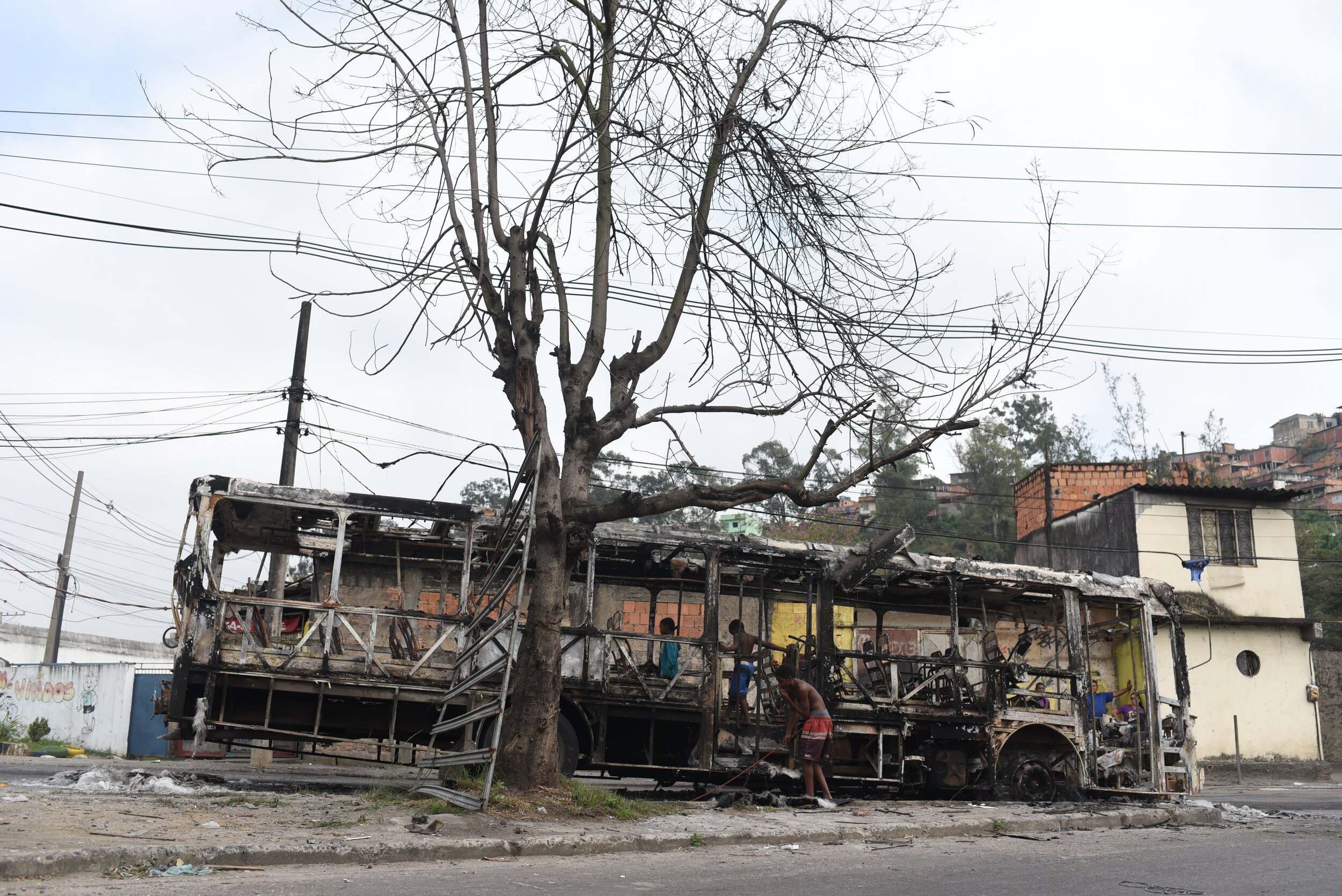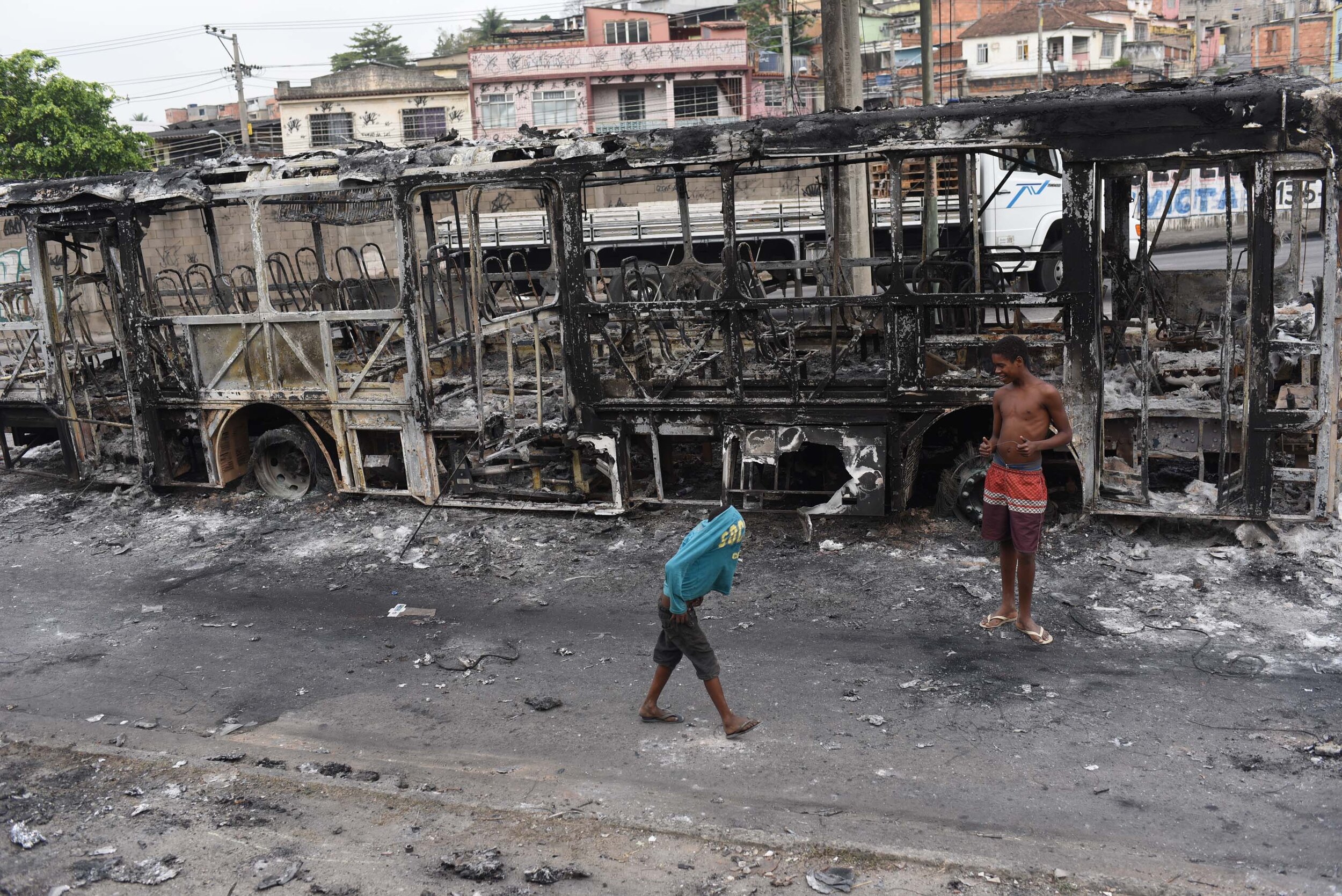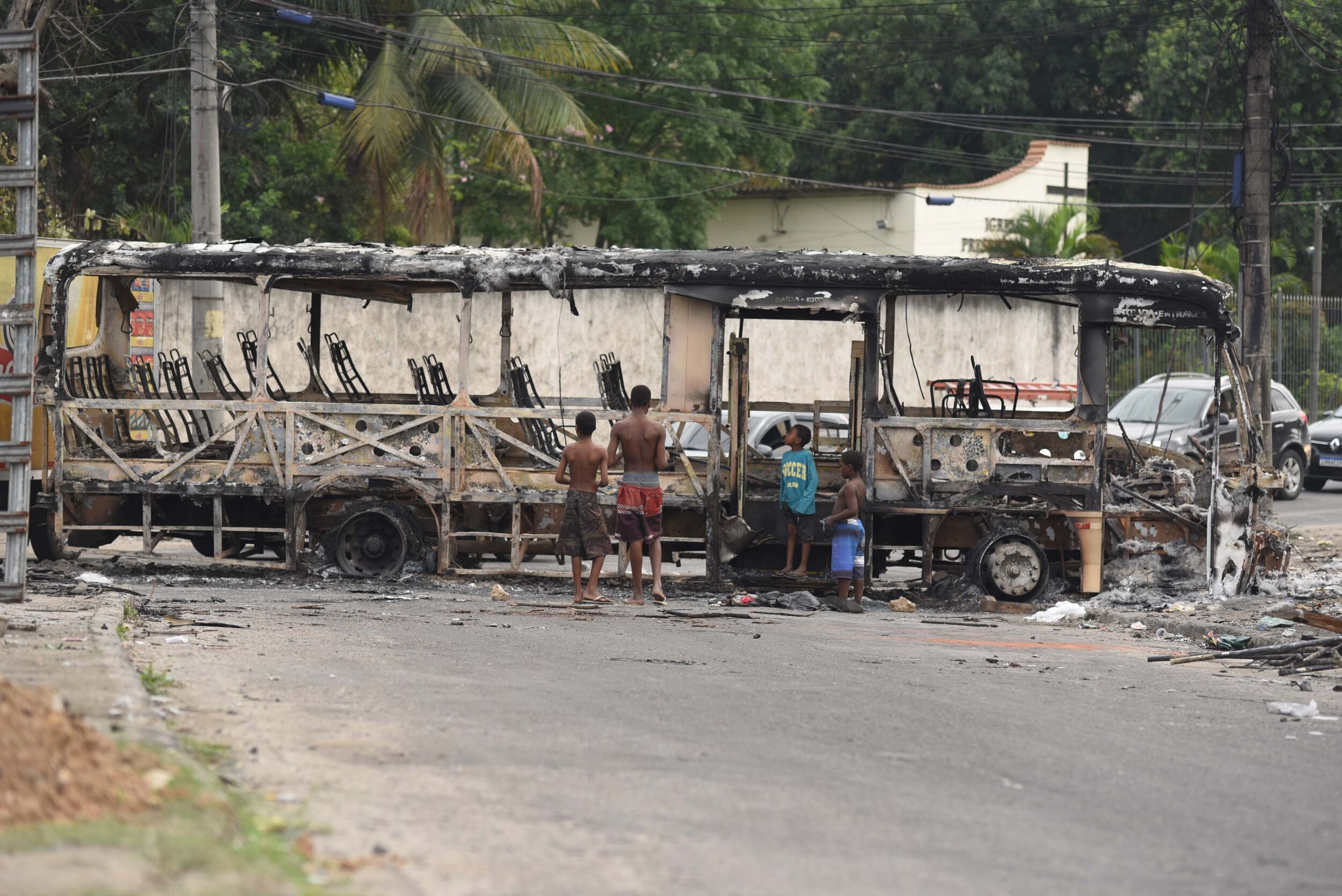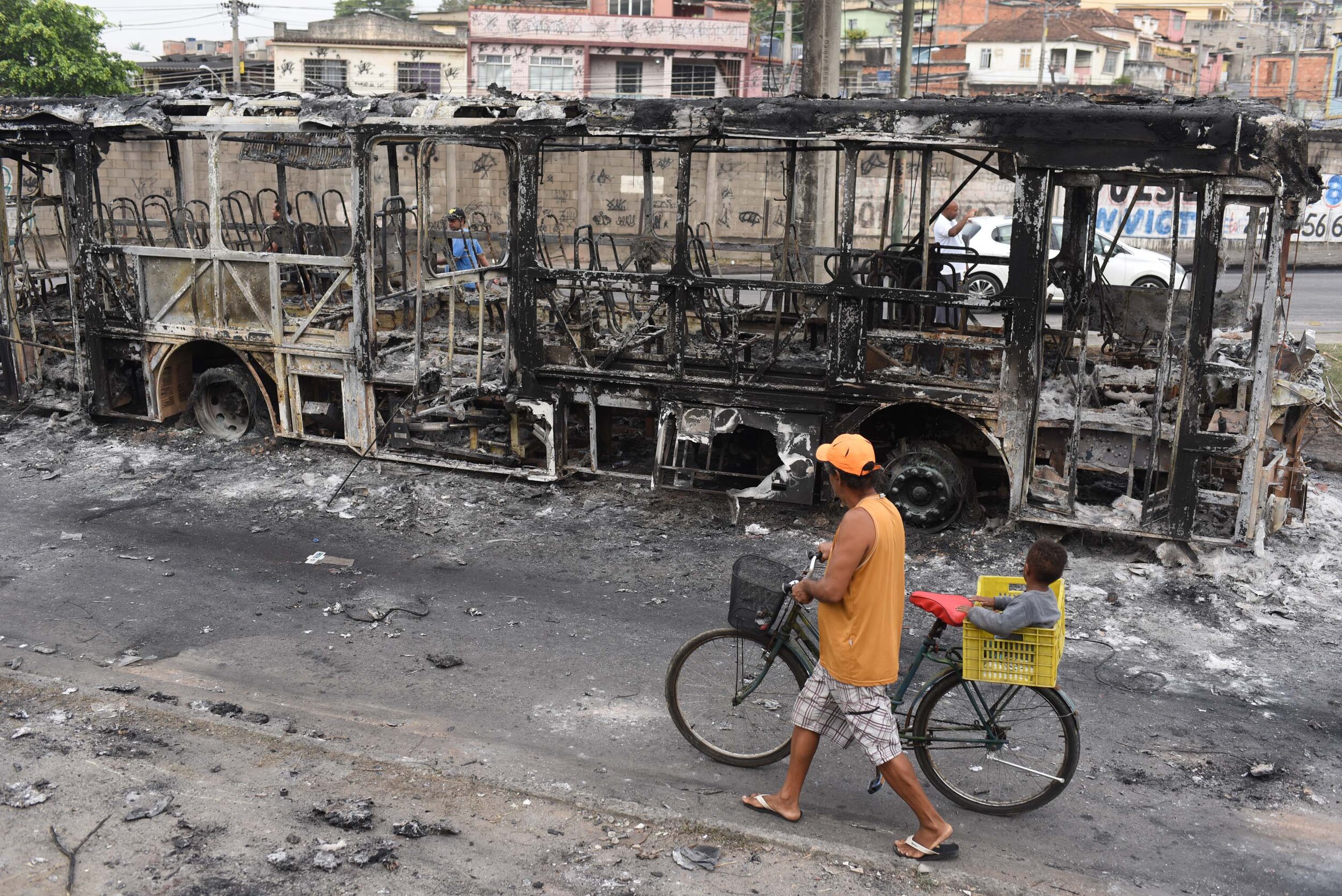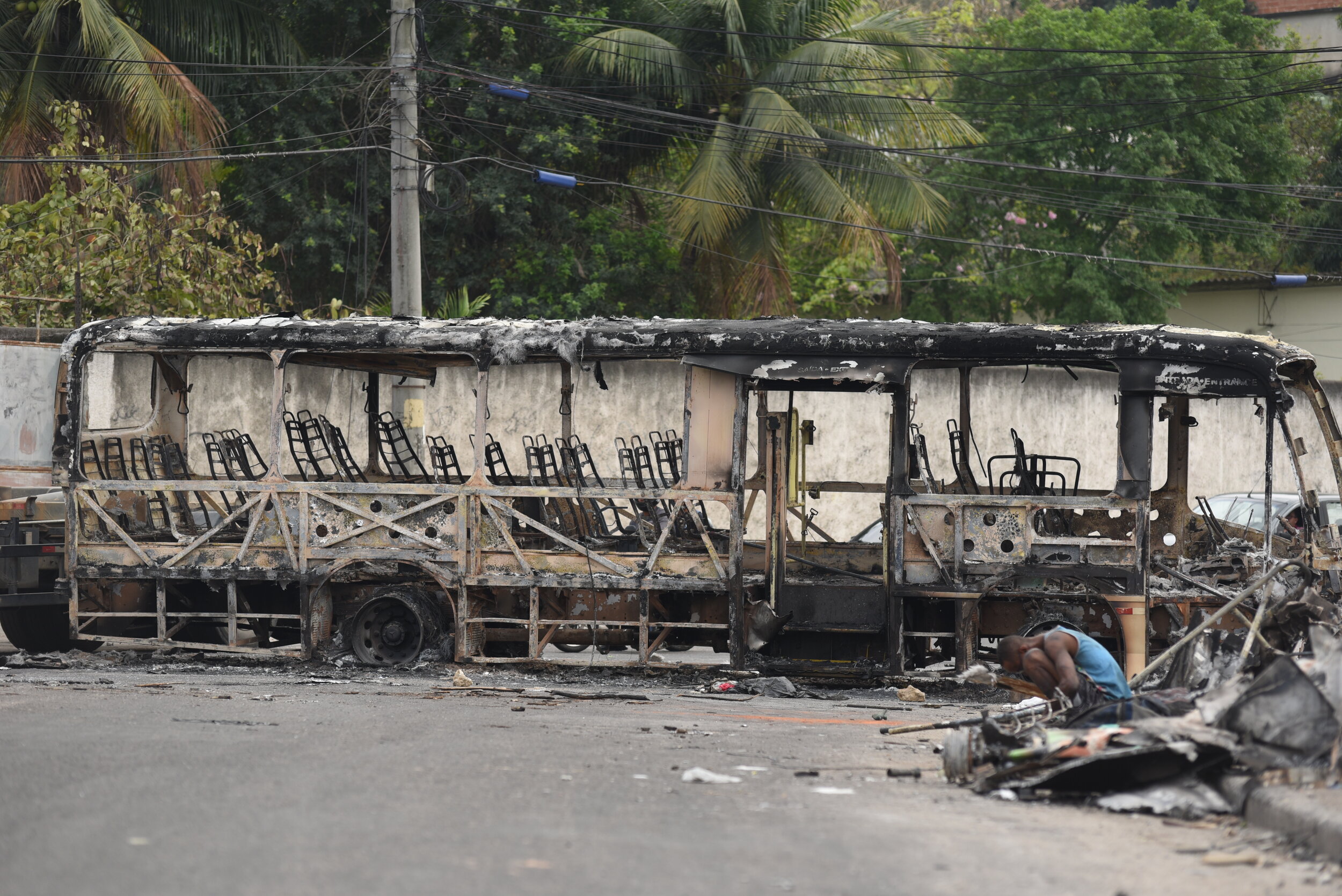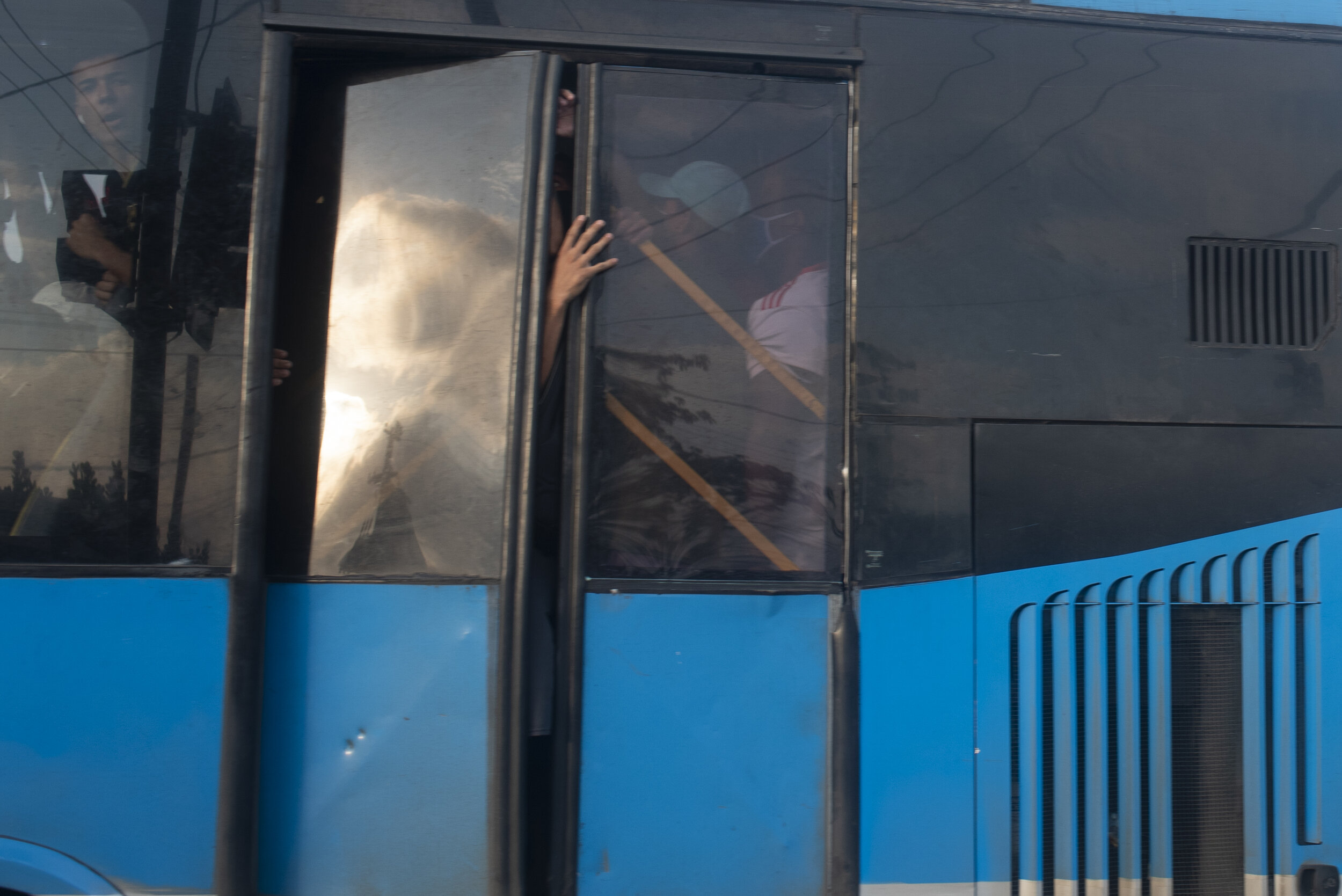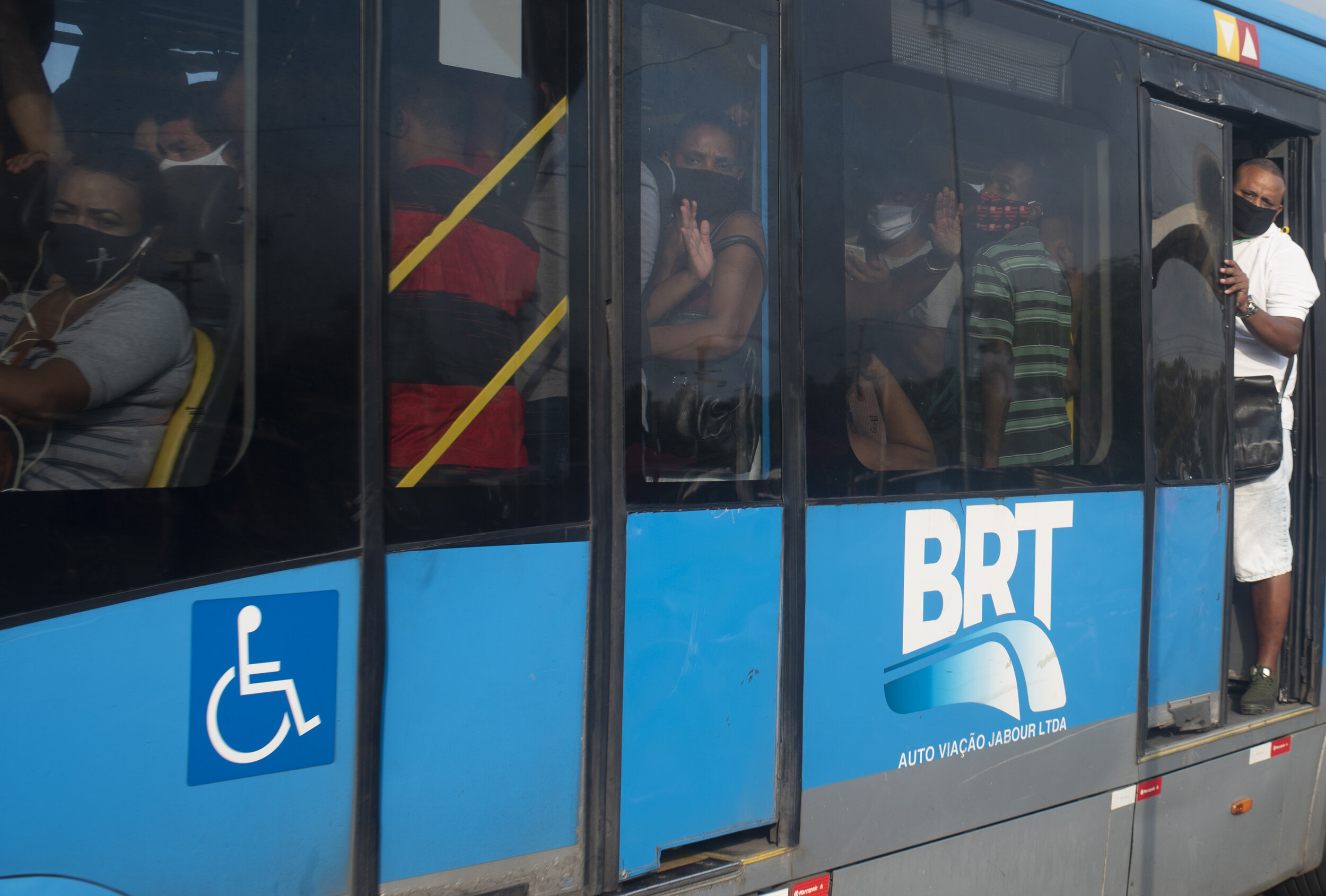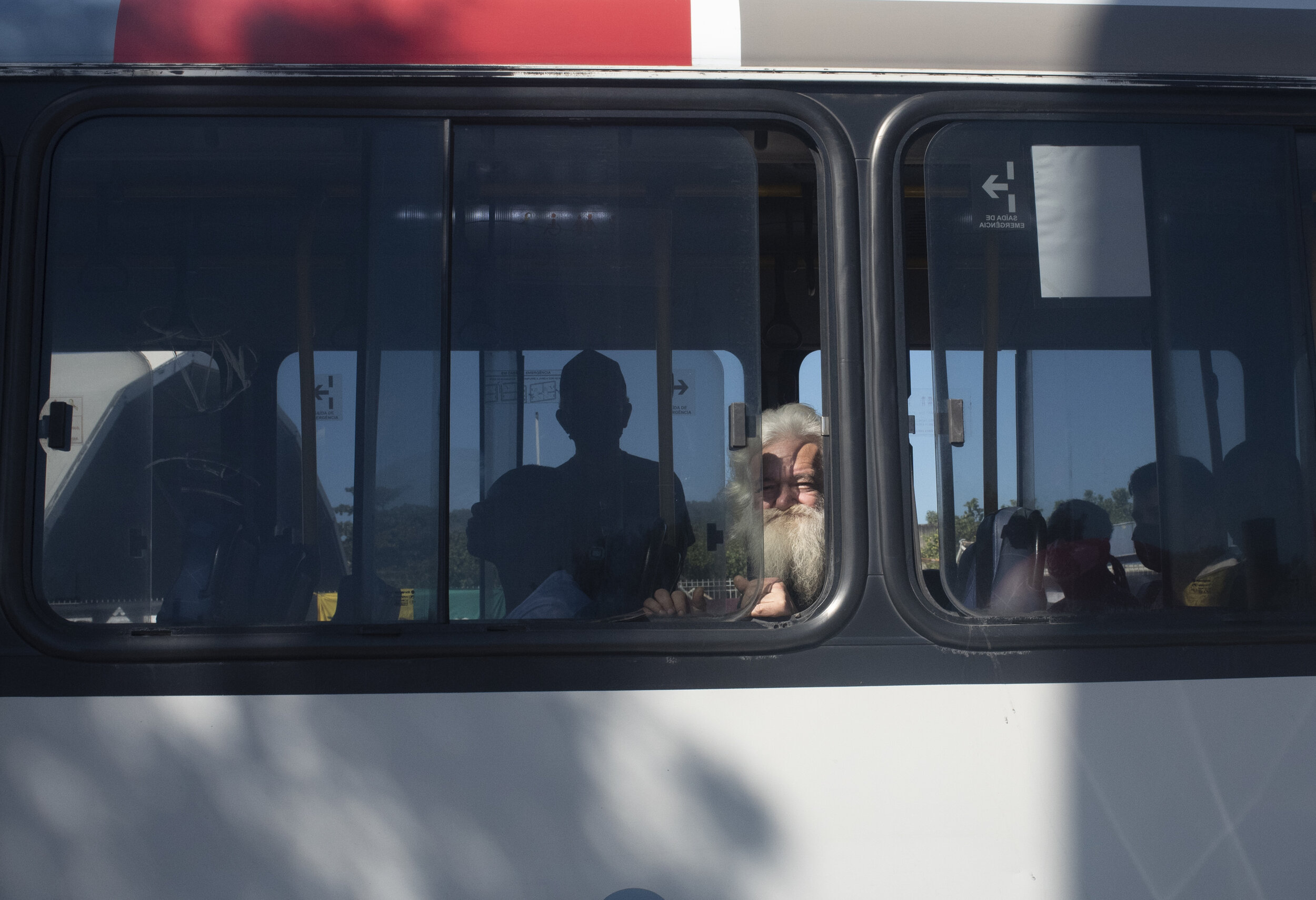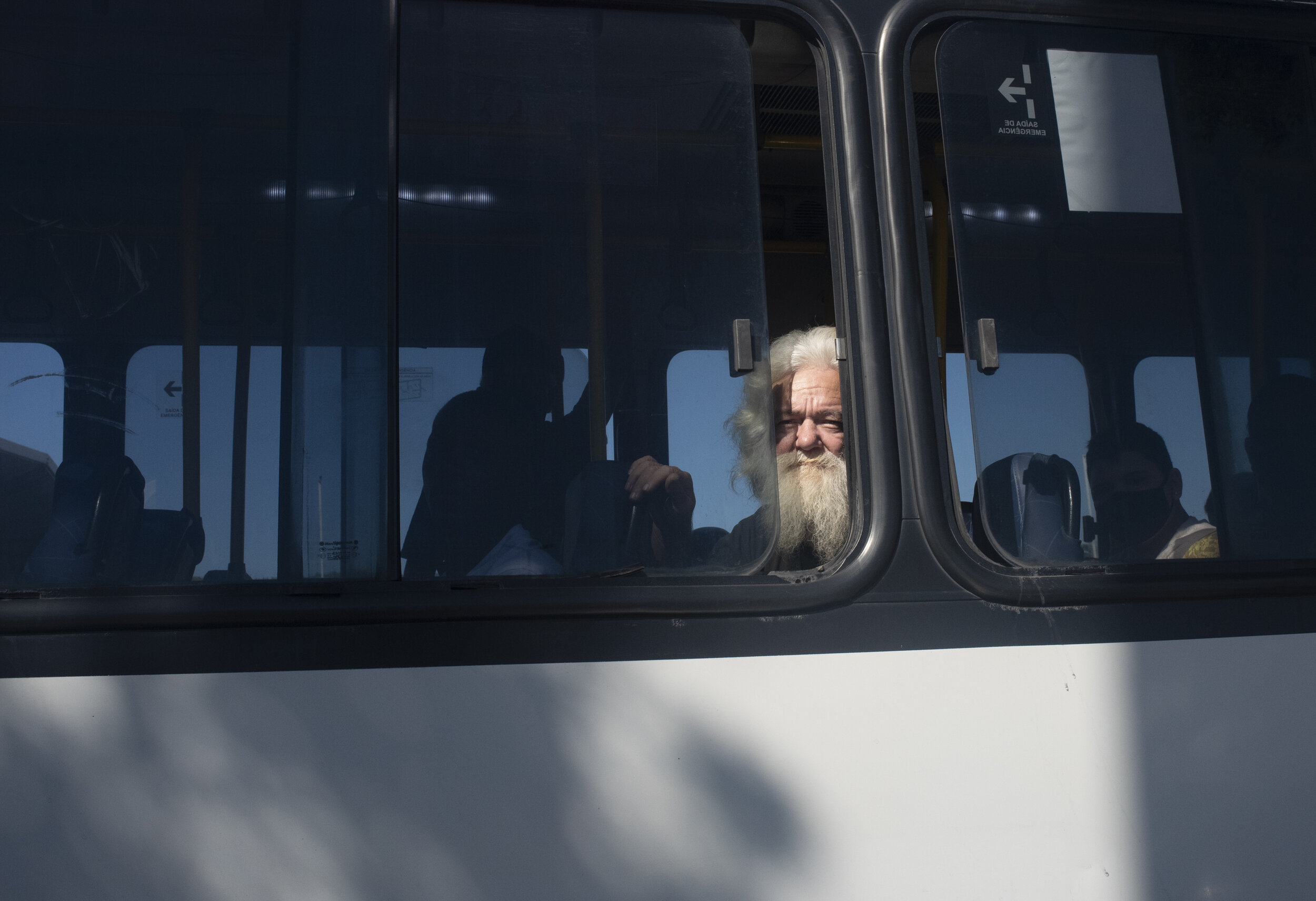Investment In Public Transportation That Exacerbates Inequality
“Government investments in public transport systems may very well be exacerbating inequality due to their direct ties with the global capitalist system.”
Este artigo está disponível em Português (BR) na Le Monde Diplomatique Brasil.
Figure 1 September 11th, 2020. Rio de Janeiro city center.
To claim that investment in public transportation goes against the interests of low-income workers is counterintuitive. It is expected that the highest someone’s income is, the less likely they are to rely on buses to get around. Therefore, if money is spent to make improvements in this sector, we naturally expect investments to target users’ interests and well-being. And, because of this expectation, whenever buses are vandalized during a protest, many observers perceive this destruction as symbolic of ungratefulness — to bite the hand that feeds. Could it be, however, that investment in public transport in fact leads to disadvantages to the lowest income working population?
Blatant corruption — embezzlement and bribes in massive infrastructure projects — is not the only thing working against those who can’t afford to go to work by car or Uber. In Brazil, Rio de Janeiro’s “Bus rapid transit” (BRT) is a clear example of how financing of public transportation projects does not have the poor population’s well-being in mind — even when executed through legitimate (legal) means.
Rio’s BRT was implemented in 2012, with the promise of comfort, speed, effectiveness, sustainability, and reduction of traffic and pollution. It also sought to prepare the city for hosting global sporting events in 2014 and 2016, as well as riding the wave of an influx of investments. In 2020, however, the municipal secretary of construction that oversaw the implementation of this project was arrested for taking one million Reais in bribes.
Now, almost a decade later, the bus-lines are crowded, ineffective, and mismanaged — issues that have only been exacerbated by the pandemic. “According to BRT Rio, a drop of up to 75% in the number of passengers was registered because of the covid-19 pandemic” leading to 200 million Reais in lost revenue. In February of this year, BRT bus drivers went on strike because their January paychecks were incomplete and, after two days of interrupted service, an agreement was reached.
Corruption, mismanagement, and a global health crisis, however, are not bumps on an otherwise smooth road towards combatting poverty. Even without those obstacles, this road was still leading straight to maximum profits to multinational companies and an increase in inequality. At the end of 2012, the Brazilian Development Bank (BNDES) published a report called “BRT financing: the international experience of the BNDES”. In this report, they point out that Brazil is the biggest bus producer in Latin America, and the third largest in the world. Meanwhile, the BNDES “acts as an export credit agency, structuring operations and providing funding to finance exports of Brazilian high value-added goods”. Therefore, the primary reason for investing in this fast bus line in Rio is to “reinforce Brazilian companies’ corporate strategy” by consolidating Brazil as a global provider of buses and parts.
While the BRT didn’t exactly come out as promised for the bus-riding segment of Rio’s population, the revenue numbers of Brazilian multinational companies who built the buses did pan out. For Marcopolo S.A., the largest coach builder in Latin America and the third largest on the planet, “exports […] reached revenues of R$1.3 billion in 2012, an increase of 50.3% over the previous year’s earnings” — the same year the BRT was implemented. The implementation of the BRT leads to increased exports because “the purchase of vehicles” by “private operators is fundamental”, according to the BNDES report. These incentives of private sales supposedly lower the cost of the buses and guarantee their maintenance.
It would be opportune to highlight that most of the money the BNDES has to invest comes from Brazil’s National Treasury — tax-payer’s money (nearly 2 billion of which were invested in the BRT project). Meanwhile, Marcopolo S.A. belongs mostly to one Brazilian family, and at least 20% of one of its class of shares belongs to US and UK based investment companies [1]. In other words, a portion of the collective wealth of the Brazilian population is funneled, through the export credit insurance of the national development bank, into the personal wealth of half a dozen men with the same last name, and a sizeable group looking to profit from leftover Dollars and Pounds.
In practice, however, this highly profitable investment in public transport in Rio de Janeiro has admittedly created a spatial dynamic in which “increased concentration of jobs for those with higher education” led to “a direct impact in income inequality”, according to an academic evaluation published this year. Not only did the implementation of the bus line set out to improve the experience of private vehicles, but it also acknowledged that people without higher education have less choice around work-home displacement. For them, travel times did not necessarily decrease, and user satisfaction did not improve.
Essentially, the expansion of the transportation infrastructure connected new areas to the city center, also expanding the residential areas with affordable accessibility. This led to more segregation and inequality because the middle class had more accessible places to live, and higher concentration of well-paying jobs. All the while, a whole other segment of the population had fewer opportunities to participate in this spatial reorganization, which the report called a “reduction in probability of choice”. As the middle class started making more money and living in nicer places, the lower class was more segregated and kept from better job opportunities.
The results of this evaluation, about the effectiveness of mobility projects financed by the BNDES between 2009 and 2018, “show the dynamics between spatial segregation and income inequality” without attributing it to corruption and mismanagement, but to the intrinsic nature of the project instead. It concludes by stating that “connectivity gains only occur when in fact there is a system that allows access to all areas of the city”, which was not how this BRT plan was devised from the beginning.
Counter intuitively, government investments in public transport systems may very well be exacerbating inequality due to their direct ties with the global capitalist system. The stakes of a government project are highest when they affect the satisfaction of CEOs and foreign investors, and not the satisfaction of the users that need the service the most. In other words, the utility of this service is judged by its ability to satisfy the needs of an elite.
When we perceive this conjuncture through these lenses, the frustration the population expresses by protesting and vandalizing buses begins to look justified. This transport system is not what these people want because it’s executed by an economic system that does not have their best interest in mind. We ought to ask ourselves, if the social well-being and utility of a service is increasing only for one segment of society while decreasing for another, can we still describe it as useful for promoting well-being?
[1] T. Rowe Price International Ltd. 63,807,742 Equity, 10.5%. Westwood Global Investments LLC. 30,312,361 Equity, 5.01%. The Vanguard Group, Inc. 17,995,552 Equity, 2.97%. Dimensional Fund Advisors LP. 10,412,299 Equity, 1.72%.
Mirna Wabi-Sabi
is a writer, political theorist, teacher and translator. She’s site editor at Gods and Radicals, and managing editor at PLATAFORMA9.



